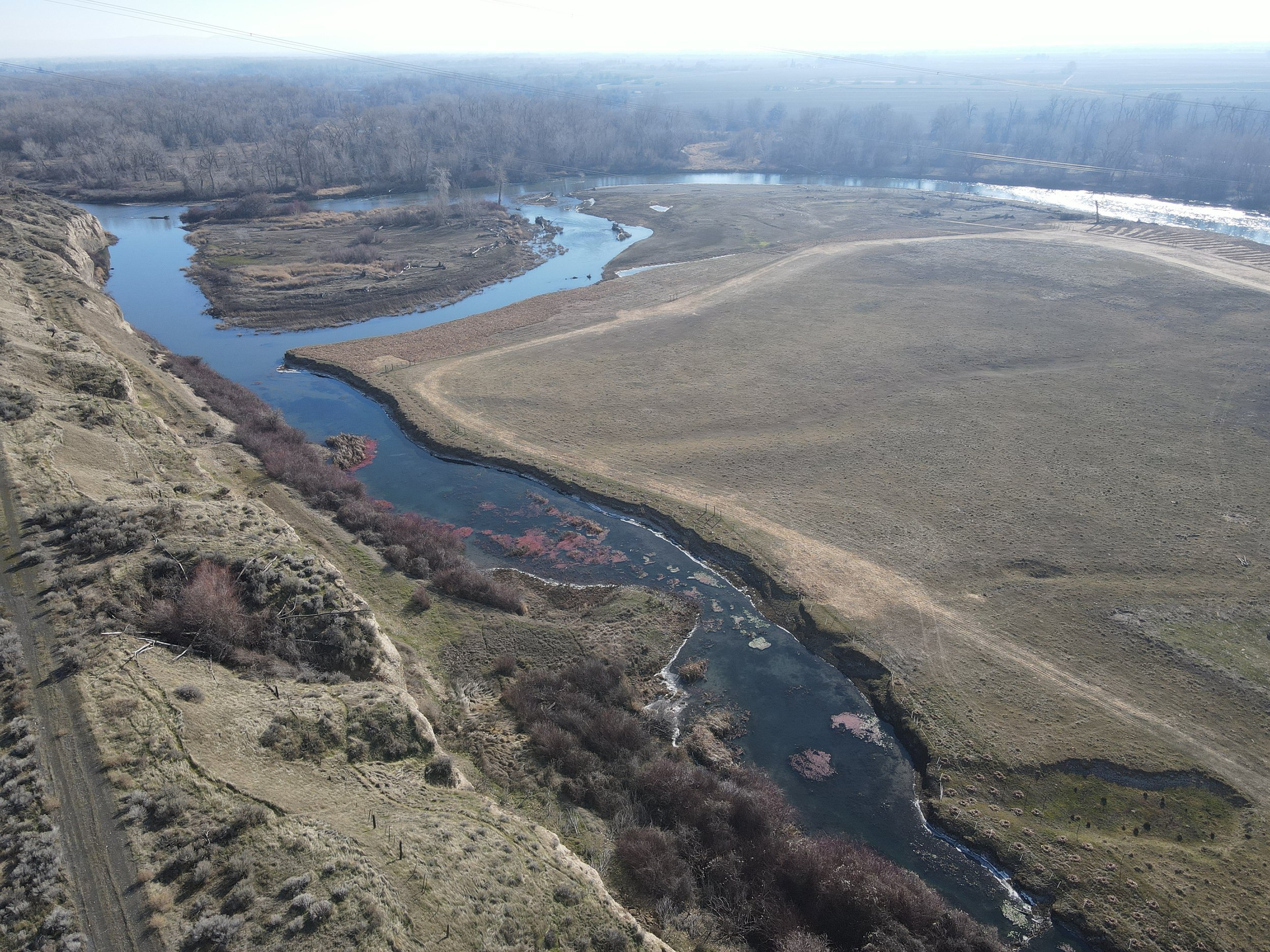
This section of the Yakima River runs from Union Gap to the confluence with the Columbia River.
Check out our work in the Lower Yakima River!
Lower Yakima River
Cold Water Refuge
Cool water is in short supply in the lower Yakima River and cool water (68 ˚F or colder) is required by species like Sockeye and summer Chinook as they finish their already perilous journey to their spawning grounds. The Lower Yakima River, from Prosser to the Tri-cities typically exceeds this temperature from June through August of each year.
Water Stargrass Project
In the lower Yakima River, lack of scouring spring floods, low summer flows, and abundant nutrients have created conditions for an aquatic native plant, water stargrass, to become much more abundant. Mid-Columbia Fisheries is working with Benton County Conservation District to create an emergency drought-response plan to remove water stargrass from key fish areas in drought years, from below Prosser dam to the confluence with the Columbia River.
Yakima River Delta Restoration
For the past several years, collaborative work has been done to improve fisheries, habitat, and water quality in the Yakima Basin. The continuation of this work relies on getting salmon and steelhead past Bateman Island, which sits at the mouth of the Yakima Delta, at the confluence of the Yakima and Columbia rivers. The barrier, coupled with its effect on water quality and non native predators, severely impacts migrating salmonids and other native fish species.
Yakima River Project Development
Efforts are underway to restore habitat in the Yakima River below Union Gap. This reach is a critical migration path for all salmon and steelhead in the basin and provides key spawning and rearing habitat for summer and fall Chinook. To identify, develop, and implement restoration projects that improve this important stretch of the Yakima. In 2018, Mid-Columbia Fisheries Enhancement Group worked with landowners, and local, state, and regional partners to identify important restoration efforts in the Wapato Reach, a 50-mile stretch of river between Union Gap and Mabton, and is continuing to develop and identify priorities further downstream.
Yakima River Mile 25 Restoration
The Yakima River Mile 25 Thermal Refuge project is focused on increasing the cool water influence of a disconnected oxbow on the left bank of the Yakima River near Benton City. The goal of the project is to provide a refuge area for migrating adults and improve rearing conditions for juvenile salmonids. This project, coupled with several other in development projects downstream of this location, will capitalize on critical sources of cool water in this very hot portion of the Yakima River. This project is made possible through the generosity of a volunteer landowner.
Yakima River Mile 80 Reforestation
A thermal anomaly exists at RM80, MCF replanted 12 across this thermal alcove, spring feature, and along the mainstem Yakima River. This reforestation project converts agricultural pasture back into a riparian forest.






